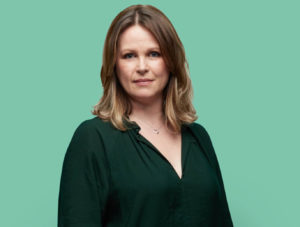For those not familiar with the notion of “design thinking”, can you give a quick explanation?
There is a misconception of design being entirely aesthetic. That it’s just about making things pretty. Design is so much more than that.
True design thinking is about placing the end user at the centre of the process so that you are solving the real problems that these people need solving, and doing so in a way that’s free from preconception.
“There is a misconception of design being entirely aesthetic.”
Google and IDEO have created formal processes for design thinking, but whatever methodology you follow it’s ultimately about taking a human-centred approach. This is where our mission came from – to make contracts more human.
Can you give some practical examples of how that might look within the world of contract management?
It all begins with thinking about the end user, and why they’re using the thing that you’ve built. People sign contracts at incredibly important moments – when they close a new customer, hire a new employee or seal a partnership. Contracts are a gateway into relationships that may last years.
In the current crisis, removing friction in the contracting process has never been more important. For example, if we can help healthcare organisations run their businesses more efficiently or sign thousands of restaurants to a food delivery platform in just a few clicks, it feels that we are doing something positive.
Focusing on why something exists and how it can best help the end user forces you to challenge accepted norms. Take privacy policies, for example. These are documents that supposedly exist for the benefit of end users, and yet they have been created in such a way that ensures they are never read. In fact one study found that it would take 76 working days for someone to read all the privacy policies they encounter in a typical year! That’s crazy. These are important documents and what is the point of them existing if not to be read and understood by the end user? So we thought “Rather than it just being an afterthought, why not make it part of the Juro experience?”, and we set about creating a privacy notice for Juro that was written in plain English and presented in a visual and digestible format.
A privacy policy is the last thing most people would think of when creating a great customer experience, but that’s precisely why it’s such a great opportunity to make an impression.

Presumably the same applies to your approach with employees?
Absolutely. Our employee on-boarding process places the employee at the centre and is highly-structured to deliver great outcomes. For most companies they’ll just think – laptop, desk, quick meeting for introductions, and that’s about it. But when you take a design thinking approach, you consider the process from much more of an experiential perspective.
So from the moment we send the offer letter, we take that as an opportunity to begin the Juro experience. We ensure it’s visual and engaging. It even incorporates graphs that show the employee their stock option vesting and other complex things that are often baffling to a new hire.
“The current crisis is making us think less about being ‘professional’ and more about how we can help one other.”
This is the employee’s first encounter with our brand so we need to get it right, but for most companies these considerations are completely overlooked.
This idea of being more human is becoming more and more prevalent and I do think the current crisis is making us think less about being ‘professional’ and more about just how we can help one another. Whether it’s a judge holding court hearings over video link while sitting at their kitchen table, or those on furlough volunteering to help with the current crisis, people have never been so keen to find meaning and connection in their lives, and companies need to reflect that in their customer and employee experience.
What would you say to a company seeking to shift their culture and start thinking this way?
It would be the same thing I say to our team five times a day – the thing that they’re all sick of hearing but I won’t stop because it’s just too important. And that’s “What is the problem you’re trying to solve?” Too often we try to solve problems that aren’t important or we ask only “what” and not “why”. We have to empathise with the end user to understand the real issues that are affecting their lives, dismissing preconceptions that may cloud our judgement.
If you take that approach, you’ll become a true challenger. And what’s the point of a start-up if not to challenge?
The other thing is to always focus on people. Most CEO’s see their responsibility solely as maximising shareholder value. But maximising shareholder value is an end and the means of achieving those returns are somewhat more oblique. My view is pretty simple – that by attracting and retaining the best people, we can delight our customers and the outcome of this is to create value for our shareholders. It’s a subtle but important difference. Start with people and the rest then follows.
“What’s the point of a start-up if not to challenge?”
How do you develop metrics that monitor progress against this vision? Is it something that can be quantified and tracked?
The starting point is recognising that not everything that matters can be measured, and not everything that can be measured matters. The arbiter of commercial success is invariably recurring customer revenue, and that therefore tends to get used as a northstar, but that’s a lagging metric really and we wanted to also track something that gave a more direct sense of the customer experience.
“Not everything that matters can be measured, and not everything that can be measured matters.”
Net promoter score is one way of doing this. It goes to the end user and asks how likely it is that they would recommend Juro. But the other, which I quite like, is PMF – Product Market Fit – in which we ask questions like “If you could no longer use Juro, how disappointed would you be?” This gives a measure of how well we are solving problems for customers. If we solve customer problems well, we are more likely to achieve higher revenue growth.
I’ve heard you use the phrase “consumerisation” in reference to B2B and professional services. Can you explain what you mean and how it ties in with your mission of making contracts more human?
We sell to people. Not businesses.
The distinction between B2B and B2C is becoming increasingly vague. In the last 6 weeks, half the world has turned to Zoom for their communication. It doesn’t matter whether you’re doing so for business or personal use, you’re choosing it for the same reasons – because it’s fast, reliable and intuitive. Nobody is reading an instruction manual before dialling into their first Zoom call. The best B2B brands know they need to apply these consumer principles to their products.
It’s also true of how we price. Gone are the days of trying to muscle into an organisation with an extensive scope of work and huge price tag. Instead clients may start on a contract worth £5k a year that’s solving a very particular problem for a small team of people, but then someone from another department sees it and thinks “Hey, that’s way better than the contract process we use”, and suddenly that £5k has grown to £120k.
“We sell to people. Not businesses.”
This is the advantage of selling to the end user and addressing the real problems they want solving; you create organic, bottom-up adoption.
Content is another great example of how B2B companies can benefit from applying principles that you’d more commonly find in consumer markets. Most B2B brands judge their investments in terms of short term ROI, and if we’d done so then we’d probably have given up almost immediately and redirected our budget towards PPC. But we didn’t. We said, “Let’s try to add value to our audience and really invest in building a community, even if it takes time”.
And how does the mission of making contracts more human manifest itself within a sales environment. Has that been a challenge?
Over the last 6 months or so we have been experimenting with an outbound sales motion and we were definitely aware of the potential conflict, so we came up with a variety of mechanisms to ensure that the sales activity supported rather than undermined our mission. These include:
- Email personalisation and video – If we’re going to bother a prospect and spam their inbox (which of course we only do with their permission), we need to ensure we are really adding value. So our sales team will create short videos containing insight and ideas specifically for that recipient, and embed it into the email.
- Sharing content – Everyone thinks selling is mostly about asking for something, but for us it’s all about giving. Whether that’s sending the prospect an email cadence with links to great articles, or sharing blogs and videos via social media, our sales team are always trying to add value to their prospects’ day. And if you do that for long enough, most people will eventually give you 30 minutes of their time.
- Consultative sales meetings – Under no circumstances is one of our sales experts to ever attend a pitch and deliver the same content as they did in their previous meeting. Everything is hyper-personalised and the result of extensive preparation. The customer has got to know that we are investing in them as an individual.




